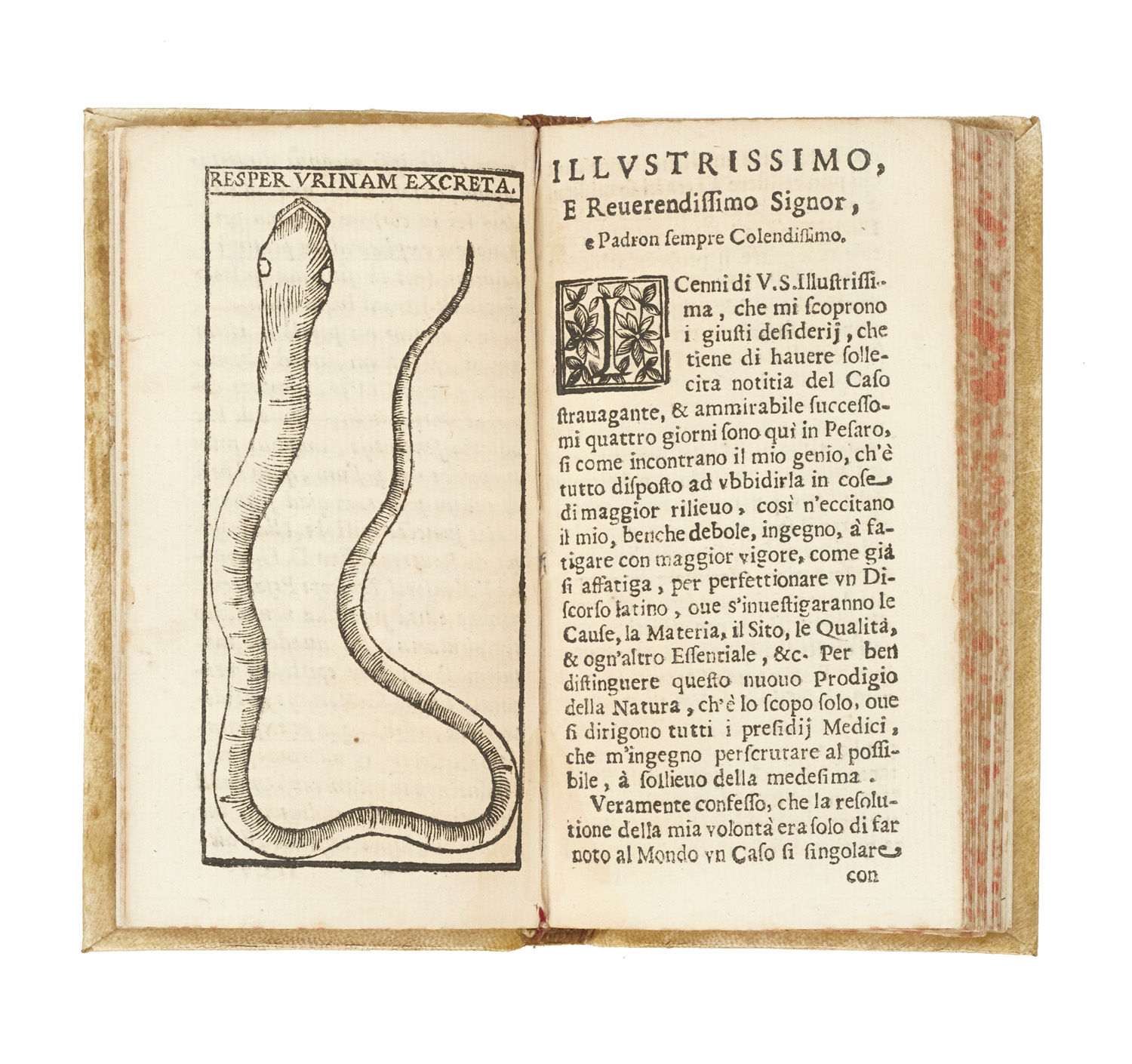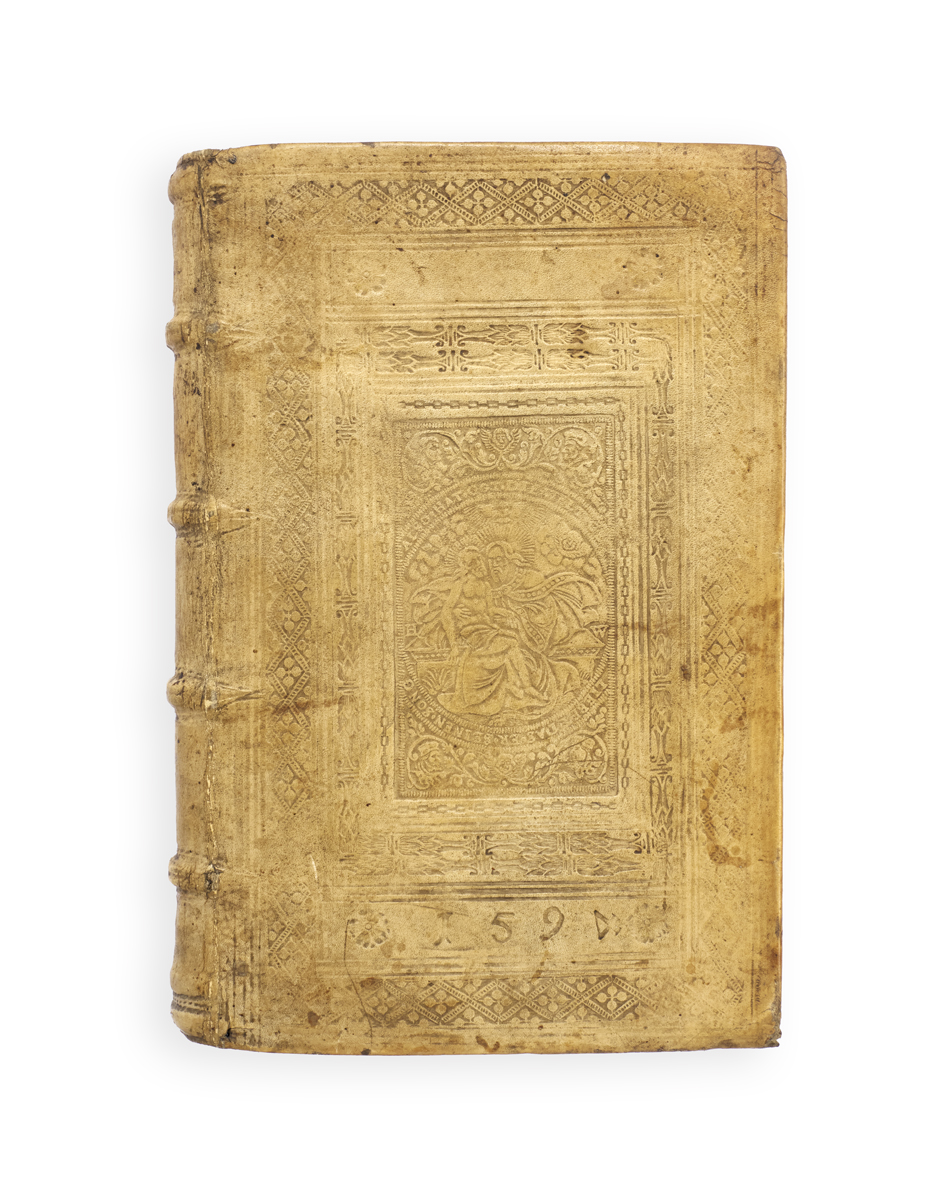
A WONDER WORM
MARINIS, Dominico de.
Dissertatio philosophico-medica de re monstrosa à Capuccino Pisauri per urinam excreta. Plura de sanguinis grumis, polypis, serpentibus, ac praecipuè de vermibus in corpore humano procreatis non iniucunda complectens ...
Rome, typis Iacobi Mascardi ... sumptibus Ben Carrarae, 1678.
12mo, pp. [20], 143, [1 (errata)]; full-page woodcut of worm to *5v, woodcut initials and tailpieces; closed tear to title neatly repaired to verso without loss, some light damp staining (most noticeable at end) and very light browning; a very good copy in later vellum, edges sprinkled red.

Added to your basket:
Dissertatio philosophico-medica de re monstrosa à Capuccino Pisauri per urinam excreta. Plura de sanguinis grumis, polypis, serpentibus, ac praecipuè de vermibus in corpore humano procreatis non iniucunda complectens ...
First edition of this scarce dissertation on worms focussing on the extraordinary case of a Capuchin preacher from Pesaro who in 1677 passed a ‘monster’ worm in his urine, which upon subsequent examination was declared to be a serpent.
The Dissertatio begins with a prefatory letter in Italian by Alessandro Cocci discussing the case of the Capuchin friar Stefano da Cammerino who for 13 months had suffered from kidney pains and bloody and lumpy urine. Following treatment by Cocci and Cesare Cesareo, Cammerino passed, with excruciating pain, a long thin worm through his urinary meatus, initially trying to pull it out, only to break it in two, and then passing the remainder, to his subsequent great relief.
The worm caused much local interest and Cocci describes how it was initially put on display to satisfy the curious, before being examined under a microscope. The conclusion of this examination was that the ‘prodigio della natura’ passed by Cammerino was in fact a serpent. As well as considering Cammerino’s case, de Marinis examines polyps and worms more generally, discussing their generation, anatomy and size, and the parts of the human body affected by them and from which they are expelled.
Only two copies in the US listed on OCLC (Minnesota and NLM).
Krivatsy 7453; Wellcome IV, p. 55.

